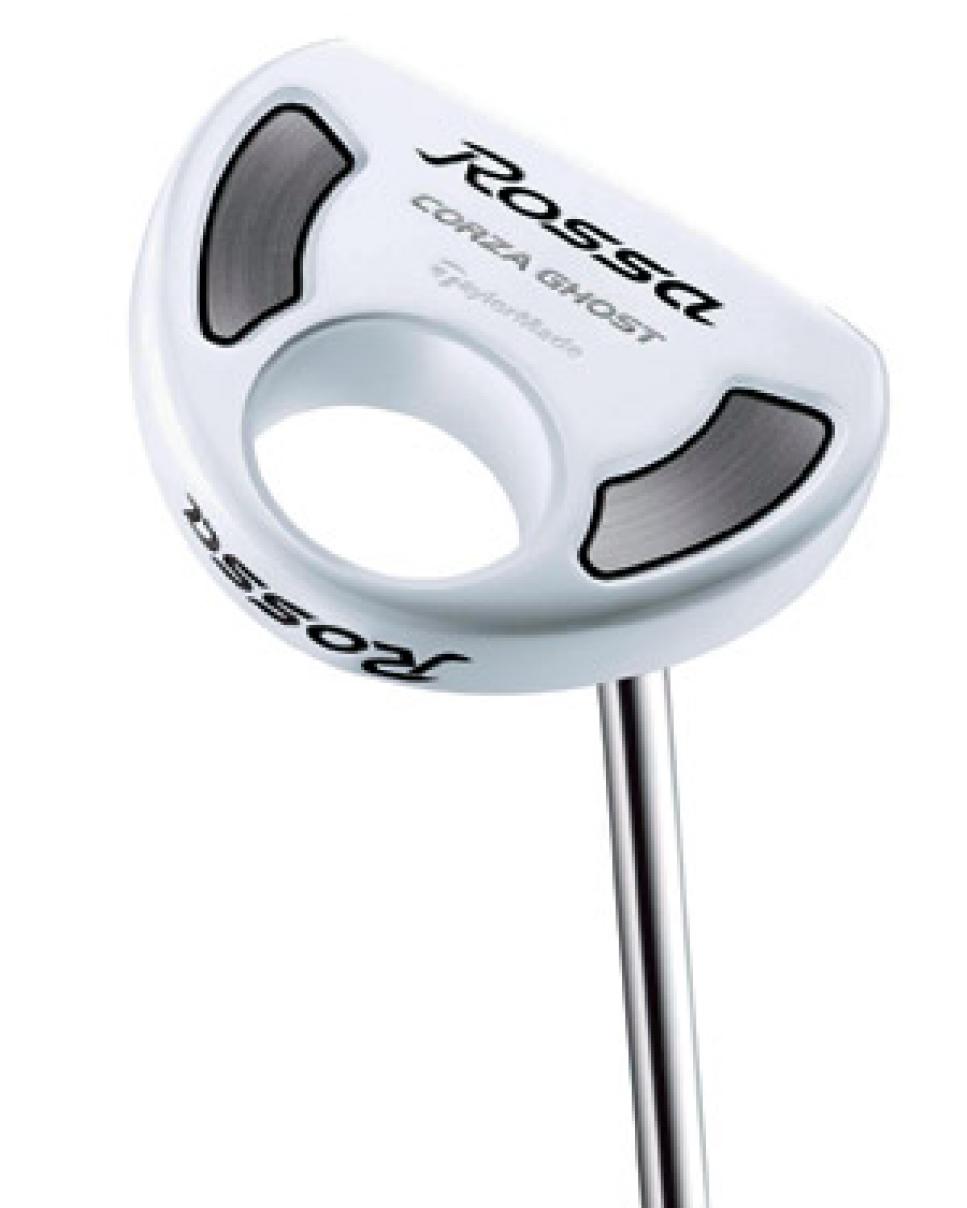News
Seeing is believing

TaylorMade Rossa Corza Ghost: The white clubhead was designed to provide contrast with the green putting surface to make alignment easier.
For many golfers, trying to putt without an alignment aid on the putter is a bit like trying to fish without bait -- it makes the task considerably more difficult.
Alignment aids are popular because, whether we know it or not, optics play a large role in one's success (or lack of it) on the greens. Think about it. When putting, we're looking at the putter, the ball and the hole. We're taking into account the slope of the green. It's a large puzzle for our brains -- and, in many ways, our eyes -- to solve.
As such it isn't exactly a shocker that some equipment companies lean on optometry experts for advice on their new putters. A recent example is TaylorMade's Rossa Corza Ghost. The Ghost boasts a white clubhead with three black lines. Although not the first white putter to grace greens on the PGA Tour (remember Jack Nicklaus' "White Fang" -- a Bulls Eye painted white?), it, according to Dr. Steven A. Hitzeman, a professor at the Indiana School of Optometry (and past chairman of the American Optometric Association's Sports Vision Section), provides a high contrast that the eye can key on.
"The high contrast between white and green maximizes stimulation to the retina and highlights the head's shape and features," said Hitzeman. "The contrast would be lower if the putter were black or gray because these colors are closer in luminance to the color of the putting green than white. White creates the biggest difference, hence maximizing contrast and promoting focus."
Although alignment aids are now high tech, most early attempts were rudimentary at best, consisting of a single dot or line or, in some cases, drawn by hand.
Back in the 1970s and '80s some players would tap the face of a Bulls Eye or an original Ping Anser with a coin to find the sweet spot and then put a line on the top of the putter on that spot. More attention was paid to sightlines, however, after Gene Littler used the appropriately named Zebra putter to win the 1975 Bing Crosby Pebble Beach National Pro-Am. Then Dave Pelz debuted his Three-Ball putter. Pelz's putter never gathered steam, but nearly two decades later, Odyssey's 2-Ball further opened the book in putter alignment.
The 2-Ball was the start of alignment based on geometry instead of from a line. Even so, many players drew a black line over the white spheres with a Sharpie for added alignment. So many, in fact, that Odyssey eventually produced the 2-Ball with a black line.
Of course, golfers see differently -- and because of that designers approach optics in many ways. Scotty Cameron, for example, has been known to make the heel smaller than the toe on putters for those having issues taking the putter back on an outside path.
Dave Stockton, a two-time major champion and now a putt-ing instructor of Phil Mickelson, among others, also sees things differently. Stockton was involved in the creation of the Ghost putter. And although Hitzeman touted the contrast of the white head and black alignment lines, Stockton feels there is an additional benefit. "The white allows you to see the leading edge clearly," he said."That's a key to good putting. Many golfers use the leading edge as part of their alignment strategy. This high contrast for the leading edge [on the Ghost] helps square up the putterface at address."
And it works better than tapping the face of a putter with a coin and marking the spot.
SPOTTED
Scotty Cameron was busy making the rounds on the putting green at TPC San Antonio. His mission was telling players about Xperimental Black, a new clubhead finish he is offering. Valero Texas Open champ Adam Scott used a Scotty Cameron by Titleist Studio Select Newport 2 with the new finish during his win, ranking T-15 in both putts per round and putts per GIR.
BAG ROOM
Ernie Els made a driver shaft switch at the Valero Texas Open, changing from True Temper's Project-X to a Fujikura 757 Speeder, which is slightly softer in the tip, promoting a higher launch off the tee. Els finished T-3 at TPC San Antonio, ranking 29th in driving distance... Although there had been sightings and photos of the club previously, Ping's Anser irons -- the company's first forged irons that will be available commercially -- made their tour debut at the Valero Texas Open. Ted Purdy and Daniel Chopra each put a set in play... Seeking less spin, Fredrik Jacobson changed to Callaway's Tour i(z) ball at TPC San Antonio and recorded his best finish (second) since the 2008 AT&T National... On the Champions Tour, Brad Bryant switched to Callaway's Diablo Forged irons at the Regions Charity Classic. Bryant finished T-12, ranking T-5 in greens in regulation for the week.